I`ve made a grid using a simple GLSL shader, passing texture coordinates to fragment shader. It was applied onto a large scaled plane.
Fragment shader:
#version 330 core
out vec4 fragColor;
smooth in vec2 f_TexCoord;
vec4 gridColor;
void main()
{
if(fract(f_TexCoord.x / 0.0005f) < 0.025f || fract(f_TexCoord.y / 0.0005f) < 0.025f)
gridColor = vec4(0.75, 0.75, 0.75, 1.0);
else
gridColor = vec4(0);
// Check for alpha transparency
if(gridColor.a != 1)
discard;
fragColor = gridColor;
}
As you can see the lines are not smooth and they start to "flickering" at the horizon. Is it possible to apply some sort of filtering/antialiasing on it? I've tried to increase number of samples (up to 4, because higher values gives me a qt error), but it has no affect on shader.
